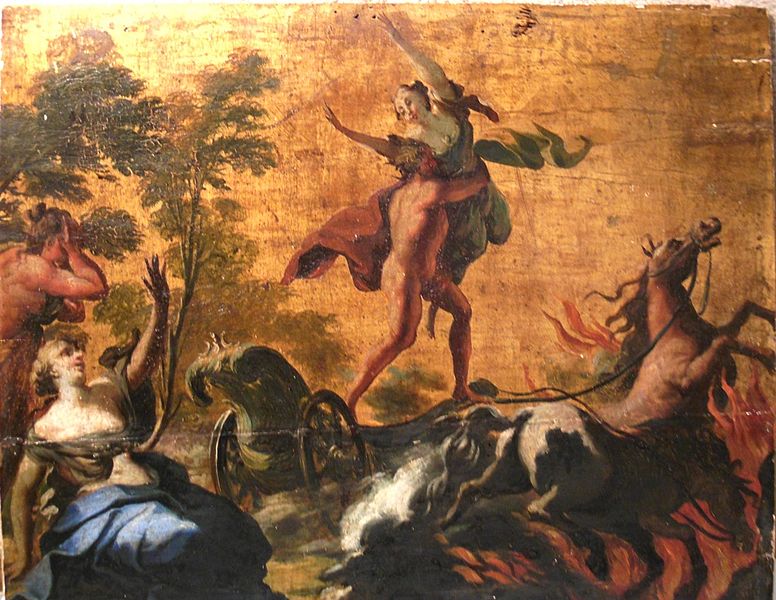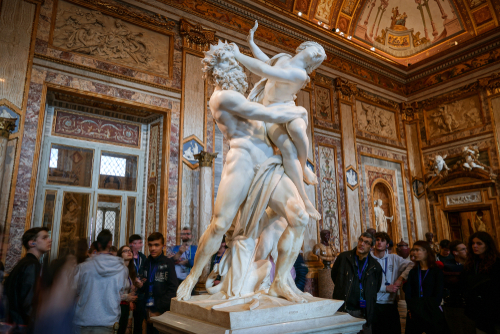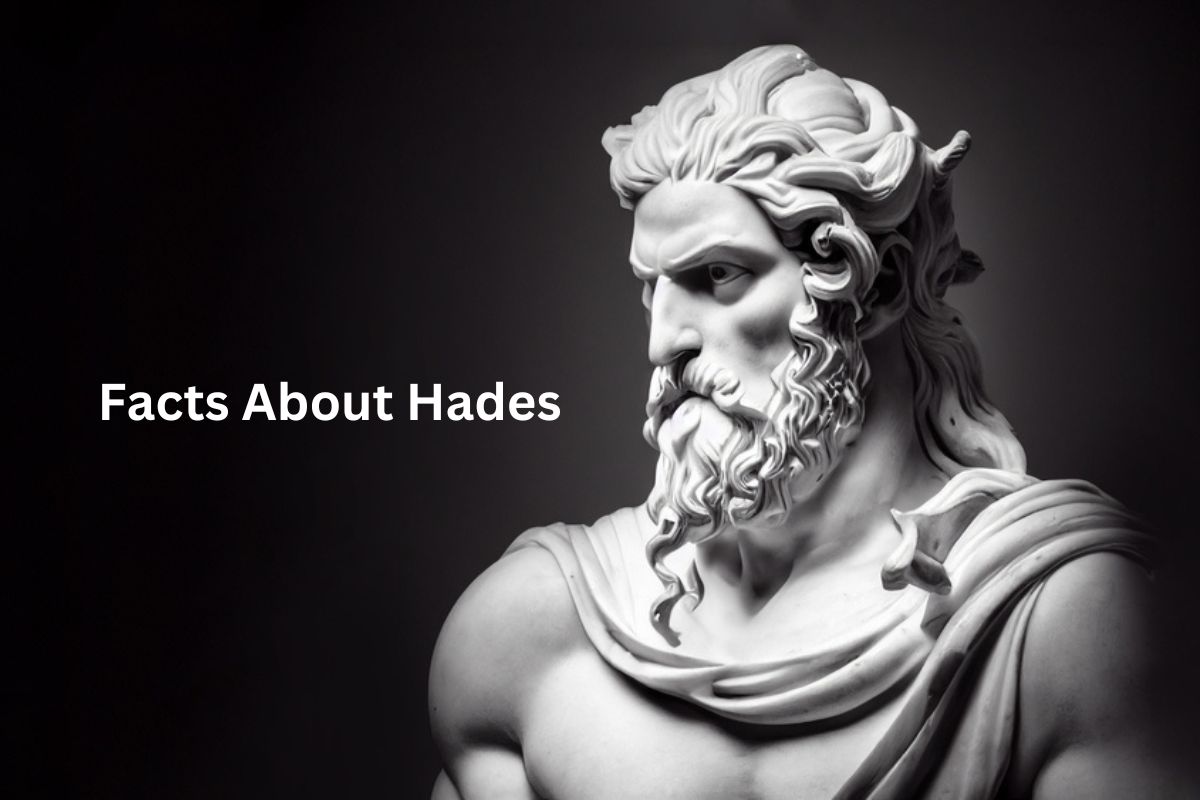Hades, the Greek god of the underworld, holds a significant place in Greek mythology. As the son of Cronus and Rhea, Hades rules over the realm of the dead, known as Hades or the underworld.
Often depicted as a stern figure with a beard and crown, he is married to Persephone, whom he abducted and brought to the underworld.
Hades is associated with the fearsome three-headed dog, Cerberus, who guards the entrance to his domain. Though often feared, Hades is portrayed as a fair and just ruler, ensuring proper judgment for the souls of the deceased.
While not extensively worshiped, he played a role in famous myths like the story of Orpheus and Eurydice. In Roman mythology, Hades is equated with the god Pluto, emphasizing his association with wealth and riches derived from the underworld.
Hades Facts
1. Hades is the Greek god of the underworld
In Greek mythology, Hades is one of the twelve Olympian gods and holds dominion over the realm of the dead.
Also Read: Facts About Athena
His name, “Hades,” is both the name of the god himself and the name of the underworld over which he reigns. This realm is a dark and gloomy place where the souls of the deceased reside.

2. He is the son of Cronus and Rhea
Hades is a member of the Olympian gods, who are the descendants of the Titans. His father is Cronus, the Titan ruler, and his mother is Rhea. Hades has five siblings: Zeus, Poseidon, Hera, Demeter, and Hestia.
Also Read: Ares Facts
After the Olympians successfully overthrew the Titans, Hades, along with his brothers Zeus and Poseidon, divided the world among themselves.
3. Hades rules over the realm of the dead
As the god of the underworld, Hades governs the domain where the souls of the deceased go after death. This realm, also known as “Hades” or “the realm of Hades,” is a place of darkness and shadow.
It is depicted as a vast, subterranean realm with various regions and realms within it, including the Fields of Asphodel, the Elysian Fields, and Tartarus.
Hades’ role is to oversee the judgment and punishment of souls, ensuring that they receive their appropriate afterlife fate based on their deeds in life.
4. He is often depicted as a stern figure with a beard and crown
Hades is commonly portrayed in ancient Greek art and mythology as a serious and somber deity. He is depicted as having a long, dark beard, symbolizing his association with the realm of the dead.
Hades is often shown wearing a crown or helmet, signifying his authority and kingship over the underworld. His appearance reflects his role as a powerful and formidable ruler.
5. Hades is married to Persephone
Hades is married to Persephone, the daughter of the goddess Demeter. According to Greek mythology, Hades abducted Persephone and brought her to the underworld to be his queen.
This event, known as the Rape of Persephone or the Abduction of Persephone, caused great distress to Demeter, resulting in the barrenness of the earth.
Persephone’s absence led to the creation of the seasons, as her return to the world above brings about spring and summer, while her descent into the underworld corresponds to autumn and winter.

6. Hades is not commonly worshiped in Greek mythology
Unlike many of the other Olympian gods, Hades was not widely worshipped in ancient Greece. He was often feared and associated with death and the afterlife, making him less approachable compared to other deities.
However, there were some cults and festivals dedicated to Hades, particularly in regions such as Elis and Sparta, where he was revered as an important figure in the pantheon.
7. Hades is associated with the three-headed dog, Cerberus
One of the most recognizable symbols of Hades is Cerberus, a monstrous three-headed dog with a serpent’s tail. Cerberus guards the entrance to the underworld, ensuring that the souls of the dead do not escape and that the living do not enter.
It is said that Cerberus possesses a fierce and relentless nature, making it an effective guardian of Hades’ realm. The inclusion of Cerberus in depictions of Hades emphasizes his role as the ruler and protector of the realm of the dead.
8. He is a fair ruler, ensuring proper judgment for the souls of the dead
Despite his association with the underworld and the afterlife, Hades is not depicted as an evil or malevolent deity. Instead, he is considered a just and impartial judge.
Hades ensures that the souls of the deceased receive their appropriate judgment and punishment based on their actions in life. He upholds the principles of cosmic justice and maintains order in the realm of the dead.
9. Hades played a role in the story of Orpheus and Eurydice
One of the most famous myths involving Hades is the story of Orpheus and Eurydice. Orpheus, a talented musician, descended into the underworld to rescue his wife, Eurydice, after she died from a snake bite.
Through his enchanting music, Orpheus convinced Hades and Persephone to allow Eurydice to return to the world of the living.
However, there was one condition: Orpheus must not look back at Eurydice until they reached the surface. Sadly, Orpheus broke this condition, resulting in Eurydice being pulled back to the underworld forever.
10. In Roman mythology, Hades is equated with the god Pluto
In Roman mythology, Hades is identified with the god Pluto. The name “Pluto” is derived from the Greek word “Plouton,” which means “wealth” or “riches.”
This association reflects the belief that the wealth of the earth, such as precious metals and gems, originates from the underworld over which Hades rules.
While the Greek and Roman mythologies have some differences, the essential aspects of Hades and Pluto as the gods of the underworld remain similar.
